Weekly Current Affairs (8th to 14th February 2025) | General Test Preparation for CUET UG - CUET Commerce PDF Download
Restructuring Skill India Programme
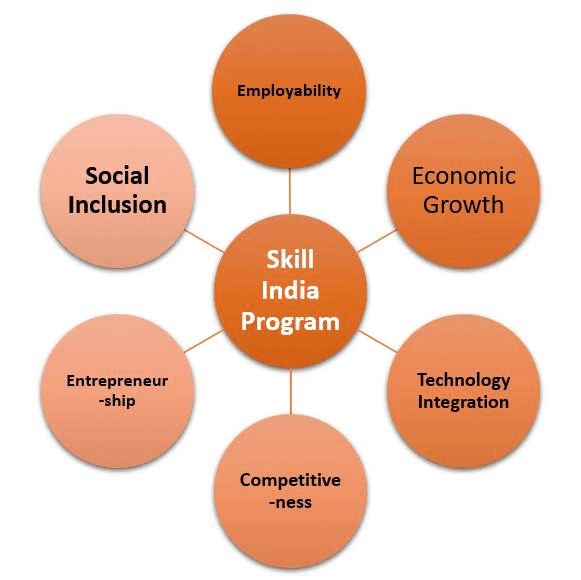 Why in News?
Why in News?
- The Government of India has announced a significant restructuring of its skilling initiatives under the Skill India Programme, aiming to enhance vocational training nationwide. This initiative merges three essential schemes to improve the quality of education and skill development for both urban and rural populations. The government has allocated ₹8,800 crore for this programme, which is set to continue until 2026.
Key Takeaways
- The Skill India Programme merges three key schemes: PMKVY 4.0, PM-NAPS, and JSS.
- It aims to provide quality vocational training across diverse demographics.
- The government has allocated ₹8,800 crore for this initiative through 2026.
Additional Details
- PMKVY 4.0: This scheme focuses on short-term training and upskilling for individuals aged 15 to 59, introducing over 400 new courses in emerging technologies such as artificial intelligence, 5G technology, and cybersecurity.
- PM-NAPS: It supports apprentices and industries by providing financial incentives to businesses that hire apprentices. The government covers 25% of the stipend, up to ₹1,500 per month, promoting the transition from education to employment for individuals aged 14 to 35.
- JSS Scheme: This initiative emphasizes community-based skill training aimed at women, rural youth, and economically disadvantaged groups, offering flexible training sessions at low costs to promote self-employment and local entrepreneurship.
The restructuring of the Skill India Programme promises to significantly impact workforce development in India. By aligning with data from the Periodic Labour Force Survey (PLFS), the government ensures that skilling initiatives cater to the economic and industrial demands. The focus on quality training and community engagement is expected to foster a skilled workforce, ultimately enhancing employment opportunities and driving economic growth.
New Income Tax Bill
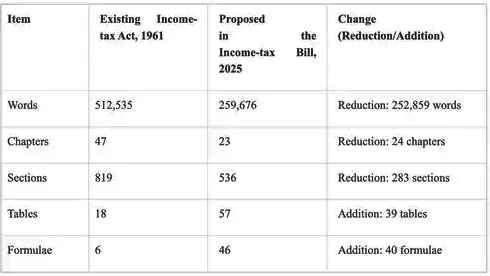
Why in News?
- The New Income Tax Bill has recently received approval from the Union Cabinet, under the leadership of Prime Minister Narendra Modi. This significant legislation is set to replace the existing Income Tax Act of 1961 and is expected to be introduced during the upcoming Budget session in Parliament. The primary purpose of this bill is to streamline direct tax legislation, reduce uncertainties, and minimize legal disputes. According to Finance Minister Nirmala Sitharaman, the new bill aims to present tax laws in a clear and concise manner.
Key Takeaways
- The New Income Tax Bill aims to simplify tax legislation.
- It intends to make tax laws more understandable for the average citizen.
- The bill seeks to significantly reduce the length of the current legislation.
- It will eliminate outdated provisions from the current tax code.
Additional Details
- Objectives of the New Income Tax Bill: The bill's primary goal is to enhance accessibility to tax legislation, simplifying the language used in tax laws, thereby aiding citizens in better understanding their tax obligations.
- Structure of the Current Income Tax Act: The Income Tax Act of 1961 currently contains 298 sections divided into 23 chapters. Over time, various taxes such as wealth tax and gift tax have been eliminated, and the Act has seen numerous amendments, leading to increased complexity.
- Need for Modernisation: Established in a different economic context, the current Income Tax Act has become convoluted due to constant amendments. A comprehensive review is deemed necessary to modernize the tax system, aligning it with current practices like digital filing and data integration.
- Revenue Neutrality: The New Income Tax Bill is designed to be revenue-neutral, meaning it will not impose a higher tax burden on taxpayers. Instead, it focuses on simplifying compliance and clarifying tax obligations without altering tax rates significantly.
- Expected Benefits for Taxpayers: Taxpayers can anticipate clearer guidelines and a more straightforward filing process. The bill aims to reduce the number of disputed tax demands and improve understanding of tax responsibilities, potentially leading to increased compliance and fewer legal disputes.
In summary, the New Income Tax Bill represents a significant reform in India's tax legislation. By simplifying the existing framework and making it more accessible, the government hopes to foster a better understanding of tax obligations among citizens, ultimately leading to smoother compliance and fewer disputes.
Potash Mining Prospects in Punjab and Rajasthan
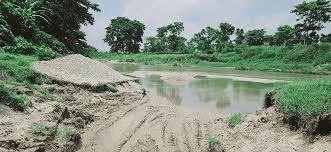 Why in News?
Why in News?
- Recent developments have highlighted the significant potential for potash mining in the states of Punjab and Rajasthan. The Punjab Mining Minister, Barinder Kumar Goyal, announced plans to explore potash reserves located in the Fazilka and Sri Muktsar Sahib districts. These reserves were identified through comprehensive surveys conducted by the Geological Survey of India. This initiative aims to diminish India's dependency on potash imports and to bolster the domestic fertiliser industry.
Key Takeaways
- Punjab and Rajasthan are being explored for potash mining opportunities.
- Identified reserves aim to reduce reliance on imports and strengthen local agriculture.
Additional Details
- What Is Potash? Potash encompasses a variety of potassium-rich minerals primarily utilized in fertilisers, with over 90% of its consumption dedicated to agricultural uses. It is one of the three essential nutrients for plant growth, alongside nitrogen and phosphorus. Different forms of potash include:
- Sulphate of Potash (SOP): A chloride-free option preferred for high-value crops.
- Muriate of Potash (MOP): Contains chloride, commonly used for carbohydrate-rich crops like wheat.
- Potash Reserves in India: Punjab is recognized as the second state with potash reserves, following Rajasthan. The identified blocks in Punjab include Kabarwala, Sherewala, and Ramsara, covering about 18 square kilometres. Rajasthan has substantial deposits in the Nagaur-Ganganagar basin, confirmed by historical surveys and recent explorations.
- Challenges to Potash Mining: Despite the identified reserves, potash mining activities have not yet begun due to concerns surrounding land acquisition, particularly among local farmers. Deposits are located approximately 450 metres below the surface, leading to protests from farmers fearing land loss. The minister reassured that advanced drilling methods would minimize land impact and that no land acquisition would occur.
- Economic Implications: The initiation of potash mining in Punjab is anticipated to generate employment and stimulate regional economic growth. The state government has started the process of auctioning mining rights, with the Kabarwala block already approved for auction. However, the progression of the project depends on addressing farmers' concerns and protecting their land rights.
- Government Actions and Future Steps: The Punjab government intends to conduct comprehensive environmental and social impact assessments prior to starting mining operations to alleviate farmer concerns and promote transparency. The central government retains the rights to auction, while states will receive royalties from extracted minerals. Once the auction is completed, mining activities may commence, contingent upon local approval.
In summary, while the exploration of potash mining in Punjab and Rajasthan presents significant opportunities for agricultural development and economic growth, addressing the concerns of local farmers and ensuring environmental considerations will be crucial for the successful implementation of these initiatives.
Challenges in Ladakh’s Renewable Energy Transmission Project
 Why in News?
Why in News?
- The ambitious Rs 21,000 crore transmission project in Ladakh aims to facilitate the evacuation of power from a significant renewable energy park. However, this initiative is confronted with several unprecedented challenges, including security issues, a shortage of skilled labor, and the necessity for improved road infrastructure. While the project is crucial for bolstering India’s renewable energy capabilities, it also raises critical questions regarding its feasibility and potential impact on local communities.
Key Takeaways
- The project aims to connect a 13 gigawatt (GW) renewable energy park in Ladakh to the national grid in Haryana.
- It will utilize high-voltage direct current (HVDC) technology to transport electricity over a distance of 480 kilometers.
- Power generation will be primarily from solar and wind energy sources.
Additional Details
- Security Concerns: The project’s location near the China border raises significant security issues for both personnel and assets, necessitating constant security measures during and after construction.
- Skilled Labour Shortage: With a demand for approximately 1,200 skilled workers, the limited local workforce means that the Power Grid Corporation plans to source labor from other states, potentially leading to logistical challenges and increased costs.
- Infrastructure Development: Current transport routes are inadequate for heavy equipment, making it essential to upgrade road infrastructure, which the Border Roads Organisation is set to assist with.
- Financial Viability: The project has received Rs 8,309 crore in central government grants, but concerns remain regarding its financial feasibility due to high installation costs and possible delays.
- Environmental and Social Impact: There are concerns from local activists about ecological disruption, particularly regarding traditional grazing lands, although a pilot solar project is proposed to allow nomadic herders to graze livestock beneath solar panels.
- Future Prospects: Construction is slated to begin in 2025-26, with the project expected to take multiple working seasons to complete, significantly increasing Ladakh’s renewable energy capacity.
Overall, while the transmission project in Ladakh holds promise for enhancing the region's renewable energy profile, it faces considerable challenges that must be addressed to ensure its success and minimal impact on local communities.
Exercise Cyclone 2025
 Why in News?
Why in News?
- On February 10, 2025, India and Egypt initiated a joint military exercise named “Cyclone 2025.” This collaborative effort is being conducted at the Mahajan Field Firing Range in Rajasthan and is scheduled to continue for a duration of 14 days. The exercise is primarily focused on the special forces of both nations, aiming to enhance military cooperation and operational readiness in desert environments.
Key Takeaways
- The main goal of Cyclone 2025 is to bolster defence cooperation between India and Egypt.
- The exercise is designed to enhance the operational capabilities of special forces in areas such as counter-terrorism, reconnaissance, and raids.
- Specialized military missions included in the training encompass sniping, combat free fall, and target designation.
Additional Details
- Participants: The Indian Army is represented by the Parachute Regiment (Special Forces), while Egypt contributes the Egyptian Commando Squadron and the Egyptian Airborne Platoon, both of which possess extensive experience in desert warfare and counter-terrorism operations.
- Training Focus: The training will cover various critical areas, including counter-terrorism operations and tactical drills. Real-world scenarios will be simulated to improve the readiness of the forces for contemporary security challenges, emphasizing skills like reconnaissance, surveillance, and target designation.
- Significance of the Exercise: Cyclone 2025 is pivotal in enhancing military relations between India and Egypt. It underscores the importance of collaboration in addressing shared security threats such as terrorism and regional instability, forming part of a broader strategy to strengthen diplomatic ties and mutual defence capabilities.
- Strategic Implications: The strategic significance of Cyclone 2025 is considerable, as both India and Egypt face unique security challenges in their respective regions. Joint military exercises like this one enhance their ability to effectively respond to threats, reflecting a growing trend in military-to-military exchanges aimed at promoting regional stability.
In conclusion, Exercise Cyclone 2025 represents a significant step in fortifying the military partnership between India and Egypt, fostering enhanced operational readiness and addressing common security concerns in a collaborative manner.
UK Launches Defence Partnership–India (DP-I)
 Why in News?
Why in News?
- On February 10, 2025, the United Kingdom officially launched the Defence Partnership–India (DP-I). This initiative is designed to enhance defence collaboration between the UK and India, coinciding with the Aero India event, where several critical agreements were signed. The DP-I will serve as a dedicated cell within the UK’s Ministry of Defence, acting as a central hub for strengthening bilateral defence cooperation.
Key Takeaways
- The DP-I aims to streamline processes related to defence procurement and technology exchange.
- Key agreements were signed during the Aero India event focusing on advanced defence technologies and manufacturing capabilities.
Additional Details
- Key Agreements: Contracts signed include a collaboration between Thales UK and Bharat Dynamics Limited (BDL) for Laser Beam Riding Man-Portable Air Defence Systems (MANPADS).
- The initial supply will feature STARStreak high-velocity missiles, with plans to produce Lightweight Multirole Missiles (LMMs).
- Advanced Missile Systems: An Advanced Short-Range Air to Air Missile (ASRAAM) assembly and testing facility is being established in Hyderabad to manufacture missiles for the Jaguar and Light Combat Aircraft-Mk1A.
- Integrated Full Electric Propulsion (IFEP) System: A Statement of Intent was signed to design and develop an IFEP system for India’s next-generation Landing Platform Dock (LPD) fleet, crucial for modernising naval capabilities.
- Maritime Testing Facility: A collaboration between General Electric Vernova and Bharat Heavy Electricals Limited (BHEL) aims to create India’s first maritime Land-Based Testing Facility, expected to facilitate LPD delivery by 2030.
- Strategic Implications: The DP-I reflects a strategic shift in defence collaboration, addressing mutual security concerns and enhancing interoperability between the UK and Indian armed forces.
- India’s Defence Self-Reliance: The UK’s commitment supports India's goal of Atmanirbhar Bharat (self-reliance in defence), highlighting the importance of collaboration in achieving this objective.
The launch of the DP-I and its associated agreements signify a significant enhancement in defence collaboration between the UK and India, projected to create jobs and stimulate economic growth in both nations while addressing their mutual security interests.
Delhi High Court Ruling on NFRA
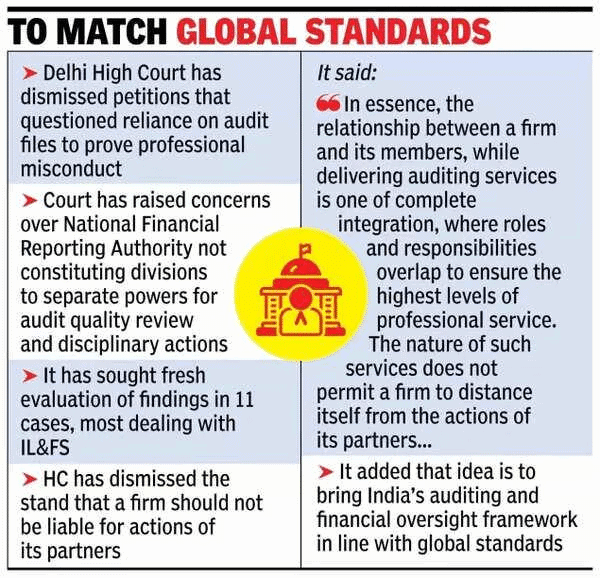 Why in News?
Why in News?
- The Delhi High Court recently issued a significant ruling regarding the National Financial Reporting Authority (NFRA), quashing the show cause notices that had been issued to auditors and Chartered Accountants (CAs). This ruling emphasizes procedural lapses rather than the substantive merits of the cases involved, highlighting important implications for the NFRA's disciplinary authority.
Key Takeaways
- The NFRA was established under Section 132 of the Companies Act 2013 to oversee accounting and auditing standards.
- The Delhi High Court identified procedural lapses in how the NFRA conducted disciplinary actions.
- Independent divisions within the NFRA are necessary to ensure fair investigations and enforcement.
- The ruling raises questions about the NFRA's ability to appeal the court's decision.
Additional Details
- NFRA's Establishment: The NFRA was officially launched on October 1, 2018, with the authority to initiate disciplinary action against auditors and audit firms for professional misconduct.
- Procedural Concerns: The court noted that the NFRA failed to separate the functions of audit and disciplinary actions, which undermined neutrality.
- Retrospective Jurisdiction: The NFRA can hold auditors accountable for standards predating its establishment, enforcing existing obligations rather than creating new ones.
- Implications for Auditors: Auditors must now navigate the complexities introduced by NFRA regulations while being mindful of their obligations under previous laws.
This ruling has far-reaching implications for the auditing profession in India, particularly regarding the NFRA's approach to discipline and oversight. It underscores the necessity for due process and the importance of maintaining impartiality in regulatory actions.
Global Commitment to Inclusive Artificial Intelligence Progress
 Why in News?
Why in News?
- The AI Action Summit, which took place in Paris on February 11, 2025, represented a significant moment for global cooperation in the field of artificial intelligence. A total of fifty-eight nations, including major players like India, China, Brazil, France, and Australia, came together to sign a joint statement that promotes the ideals of inclusive and sustainable AI. The notable absence of the United States and the United Kingdom from this agreement has sparked discussions regarding their perspectives on international AI governance.
Key Takeaways
- The joint statement emphasizes the need for AI to be accessible, ethical, and human-centric.
- It advocates for fostering an environment that encourages innovation while preventing market concentration.
- The signatories aim to ensure that AI development has a positive impact on future labor markets.
- There is a strong focus on reducing inequalities and aiding developing nations in enhancing their AI capabilities.
Additional Details
- India and France: These two nations co-chaired the summit, showcasing their leadership roles in global AI discussions. Indian Prime Minister Narendra Modi called for collaborative efforts to set up governance standards that reflect shared values.
- Absence of the US and UK: The non-participation of the US and UK raised eyebrows. US Vice President J.D. Vance voiced concerns that too much regulation could hinder innovation, advocating instead for policies that support growth.
- International Reactions: The summit included discussions on simplifying bureaucratic barriers to AI development. French President Emmanuel Macron emphasized the need for trustworthy AI and highlighted the importance of regulation alongside innovation.
- Future Directions: As the summit wrapped up, it was announced that India would be hosting the next event, continuing the focus on creating frameworks for responsible and inclusive AI development.
The outcomes of the AI Action Summit signify a strong global commitment to fostering an AI landscape that prioritizes safety, trust, and inclusivity, paving the way for future collaborations in the field.
DoT & CDRI Launch Report on DRRAF
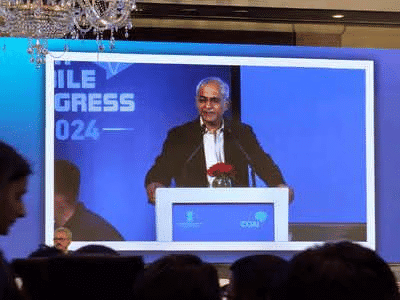 Why in News?
Why in News?
- The Department of Telecommunications (DoT) of India has released a report in collaboration with the Coalition for Disaster Resilient Infrastructure (CDRI). This report emphasizes the importance of enhancing the resilience of the telecommunications sector against disasters through the Disaster Risk and Resilience Assessment Framework (DRRAF). The initiative underscores the critical role of robust telecommunications in disaster management and economic stability.
Key Takeaways
- The DRRAF report assesses disaster risks in the telecommunications sector across five Indian states: Assam, Odisha, Tamil Nadu, Uttarakhand, and Gujarat.
- It aims to identify vulnerabilities and develop strategies to strengthen telecom infrastructure against natural disasters.
- The initiative aligns with the UN's 'Early Warning For All by 2027' program.
Additional Details
- Key Stakeholders: The DoT has collaborated with State Governments, Telecom Service Providers (TSPs), and Infrastructure Providers to ensure comprehensive data collection and analysis.
- Study Findings: A multi-hazard risk assessment was conducted on approximately 0.77 million telecom towers, evaluating risks from various disasters such as floods, cyclones, and earthquakes. A disaster risk and resilience index was created to measure the vulnerability of telecom infrastructure based on disaster intensity, frequency, and potential impacts.
- Strategic Recommendations: The report suggests several strategies to enhance resilience, including improving technical planning, creating a multi-hazard information repository, implementing risk-informed governance, developing financial instruments for telecom operators, and establishing a framework for coordinated responses among stakeholders.
- Initiatives for Disaster Preparedness: The DoT has launched programs aimed at enhancing disaster preparedness, which include real-time coordination with local authorities and telecom operators, implementing a Cell Broadcast System for emergency alerts, and promoting satellite-based communication to ensure rapid service restoration during crises.
- Global Perspective: CDRI aims to promote disaster-resilient infrastructure globally, advocating for climate and disaster resilience in infrastructure planning and development with insights from the DRRAF report intended to inform national policies and global best practices.
The DRRAF report represents a significant step towards bolstering the telecommunications sector's preparedness and resilience against disasters, ultimately contributing to better disaster management and recovery efforts.
Mission Amrit Sarovar Progress - February 13, 2025
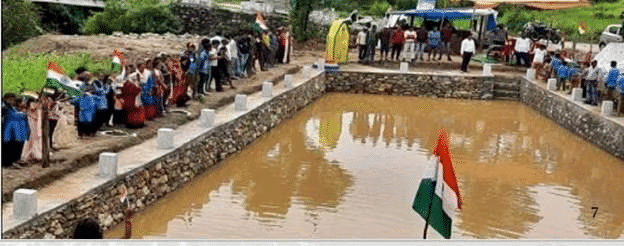 Why in News?
Why in News?
- Launched in April 2022, Mission Amrit Sarovar seeks to mitigate water scarcity issues in India. By January 2025, the initiative has surpassed its initial target, having constructed or rejuvenated over 68,000 ponds. The mission aims to create 75 ponds in each district, totaling 50,000 nationwide, significantly contributing to water availability, environmental sustainability, and community well-being.
Key Takeaways
- Over 68,000 ponds constructed or rejuvenated as of January 2025.
- Aim to establish 75 ponds in each district across India.
- Focus on sustainable water sources in rural areas.
Additional Details
- Objectives of Mission Amrit Sarovar: The primary aim is to tackle the urgent issue of water scarcity in rural regions by ensuring sustainable water sources through pond construction and rejuvenation.
- Phases of Implementation: The mission is executed in phases, with the first phase already achieving significant milestones. The upcoming Phase II will focus on enhancing community participation to ensure the sustainability of water resources for future generations.
- Collaboration and Support: The mission is supported by various government departments, with contributions from eight central ministries including the Ministry of Rural Development and the Ministry of Water Resources. Technical assistance is provided by the Bhaskaracharya National Institute for Space Application and Geo-informatics (BISAG-N).
- Utilisation of Technology: Geospatial data and technology are crucial in identifying suitable locations for pond interventions, thereby increasing the initiative's overall effectiveness.
- Progress and Achievements: By January 2025, more than 81,000 Amrit Sarovars have been identified, with over 66,000 completed. States like West Bengal and Tamil Nadu are making notable progress towards their specific district targets.
- Challenges and Resource Mobilisation: While many states are achieving targets, some face challenges. Resource gaps are filled through various existing schemes, including the Mahatma Gandhi National Rural Employment Guarantee Scheme.
- Community Engagement and Participation: Local participation is vital for the mission’s success, fostering a sense of ownership and responsibility among communities through collaboration with NGOs.
- Long-term Vision for Water Security: The mission aims to transform India's water landscape, improving livelihoods and ensuring water security for future generations through a collaborative approach to sustainable water management.
In conclusion, Mission Amrit Sarovar stands as a significant initiative addressing water scarcity in India, reflecting a strong commitment to sustainability and community engagement, with the potential to create lasting impacts on the country’s water resources.
Proposed Amendments to Advocates Act, 1961
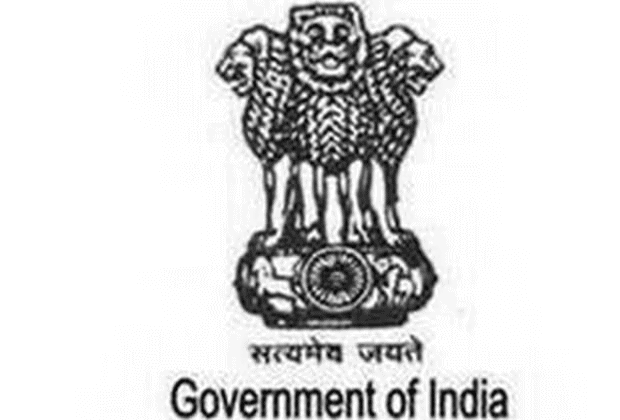 Why in News?
Why in News?
- The Government of India has introduced proposed amendments to the Advocates Act, 1961, with the intention of modernising the legal framework to address contemporary challenges. These amendments are a key part of a larger reform initiative aimed at enhancing the legal profession and legal education in India, aligning practices with global standards while promoting accessibility and transparency.
Key Takeaways
- The Advocates Act was established in 1961 to regulate the legal profession in India.
- Amendments aim to modernise legal education and practice, ensuring relevance in a rapidly evolving environment.
- New provisions will be introduced to address misconduct and improve the integrity of the legal profession.
Additional Details
- Prohibition of Boycotts: A new provision will prevent advocates from calling for boycotts of court proceedings, with violations classified as misconduct.
- Central Government Nominations: The Central Government will have the authority to nominate up to three members to the Bar Council of India.
- Punishment for Touting: The offence of 'touting' will become punishable, and courts will be allowed to publicise the names of offenders.
- Legal Practitioner Definition: The definition of a legal practitioner will expand to include corporate lawyers and those working in foreign law firms.
- Stricter Enrolment Criteria: Individuals convicted of serious offences will not be eligible for enrolment by State Bar Councils.
- Changes will also redefine what constitutes a law graduate, including qualifications from recognised institutions, and increase penalties for illegal practice by non-advocates.
These amendments are anticipated to significantly improve the integrity and discipline within the legal profession. By modernising legal education and practice, the government aims to enhance the overall justice delivery system in India, promoting a more just and equitable society.
KM3NeT Collaboration Advances on Neutrinos
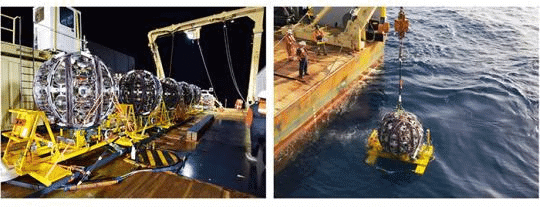 Why in News?
Why in News?
- Recent advancements in neutrino research have emerged from the KM3NeT (Cubic Kilometre Neutrino Telescope) Collaboration. This international initiative is focused on constructing observatories deep beneath the Mediterranean Sea to detect and study neutrinos, which are subatomic particles that provide critical insights into some of the universe’s most explosive events. Notably, a recent discovery involved a neutrino with an unprecedented energy level, possibly originating from beyond the Milky Way galaxy.
Key Takeaways
- The KM3NeT project consists of two main detector facilities: ARCA and ORCA.
- ARCA detected an ultra-high-energy neutrino, significantly exceeding previous measurements.
- Neutrinos can reveal hidden cosmic processes, offering unique insights into the universe.
Additional Details
- Neutrinos: Neutrinos are electrically neutral subatomic particles with very small mass. They interact very weakly with matter, allowing them to travel vast distances without obstruction, making them invaluable for cosmic studies.
- KM3NeT Project:The KM3NeT project includes two key facilities:
- ARCA: Located 3.4 km deep near Sicily, focused on high-energy neutrinos.
- ORCA: Situated at 2.4 km depth near Provence, France, aimed at low-energy neutrinos.
- Record-Breaking Neutrino Detection: In February 2023, ARCA detected an ultra-high-energy neutrino with an energy level of around 120 quadrillion electronvolts, 30 times higher than any previously detected neutrino. This was facilitated by the optimal positioning of the detectors.
- Cosmic Origins: The detected neutrino is believed to originate from supermassive black holes in distant galaxies, which create high-energy environments capable of producing neutrinos.
- Challenges: Detecting neutrinos is complex, requiring large observatories in deep water or ice. The KM3NeT detectors are still under construction, and their full capabilities are yet to be realized.
- Future of Neutrino Research: As research advances, understanding neutrinos may unlock secrets about the universe's structure and behavior.
In summary, the KM3NeT collaboration is making significant strides in neutrino research, which could lead to groundbreaking discoveries in understanding cosmic events and the fundamental nature of the universe.
|
201 videos|1016 docs|2274 tests
|
















